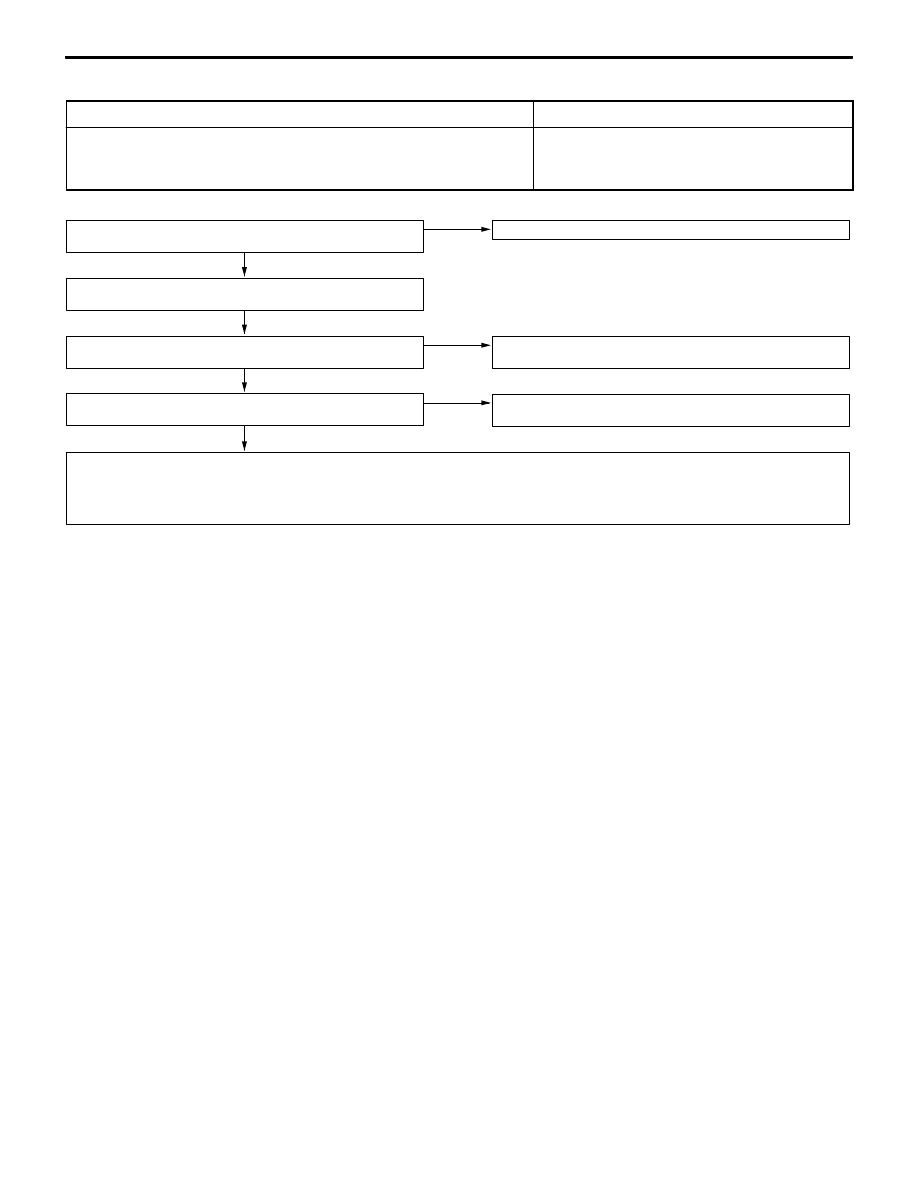Mitsubishi Lancer Evolution VI. Manual - part 34

MPI –
Troubleshooting
13-24
INSPECTION PROCEDURE 7
Long time to start (Improper starting)
Probable cause
In cases such as the above, the cause is probably that the spark is weak and ignition
is difficult, the initial mixture for starting is not appropriate, or sufficient compression
pressure is not being obtained.
D
Malfunction of the ignition system
D
Malfunction of the injector system
D
Inappropriate gasoline use
D
Poor compression
Check system voltage when cranking
OK: 8 V or higher
NG
Check the battery.
OK
MUT-
II
: Check if uncomplete combustion occurs.
(Refer to P.13-48, INSPECTION PROCEDURE 39.)
OK
Can any sound be heard from the injectors when cranking (check
using a soundscope)?
NG
Check the injector system. (Refer to P.13-15, INSPECTION PRO-
CEDURE FOR DIAGNOSIS CODE 41.)
OK
Check the ignition timing when cranking.
OK: Approx. 5
_
BTDC
NG
Check that the crank angle sensor and the timing belt cover are
installed properly.
OK
Check the following items.
D
Check the ignition coil, spark plugs, spark plug cables.
D
Check the injectors for clogging and leakage.
D
Check the compression pressure.
D
Check if foreign materials (water, alcohol, etc.) got into fuel.